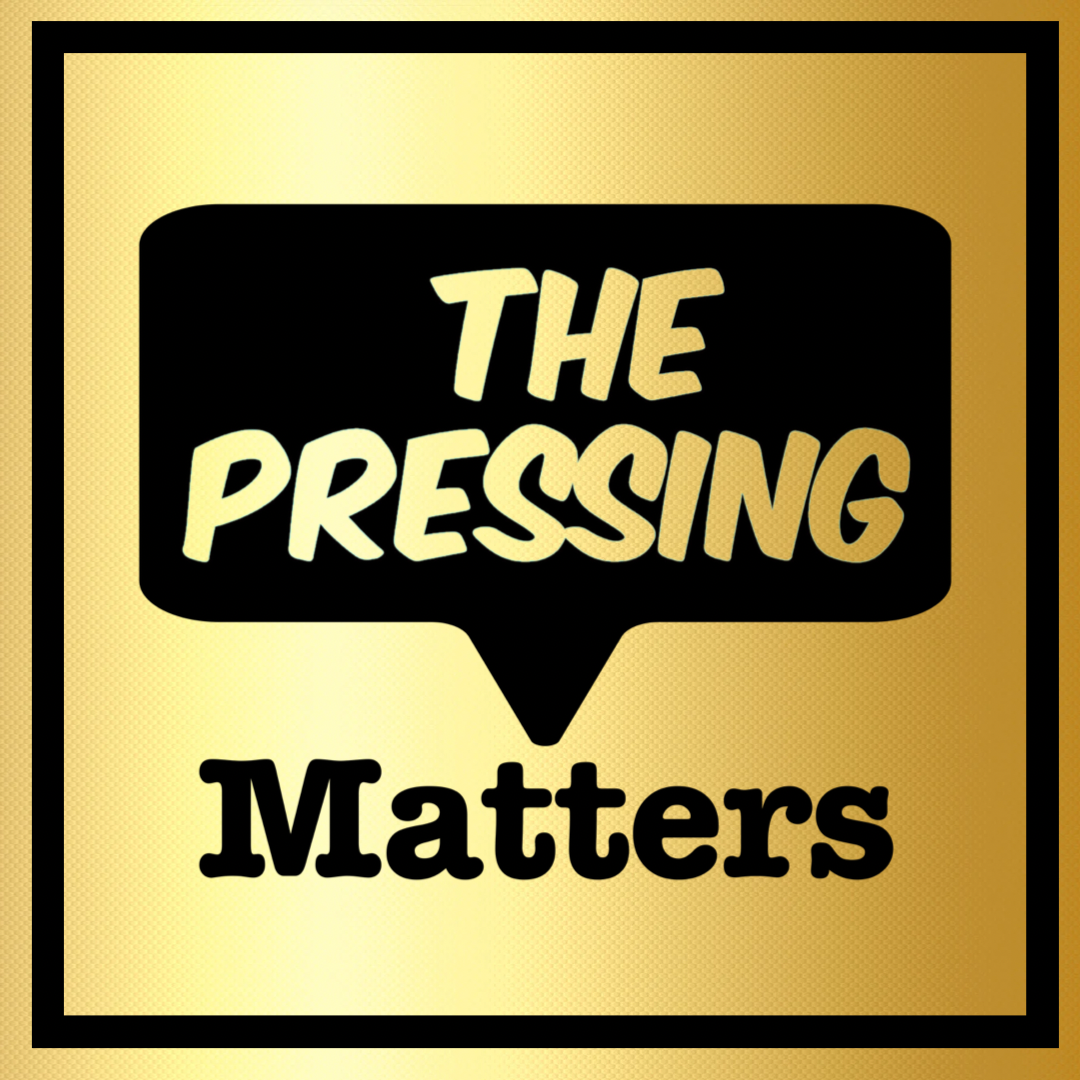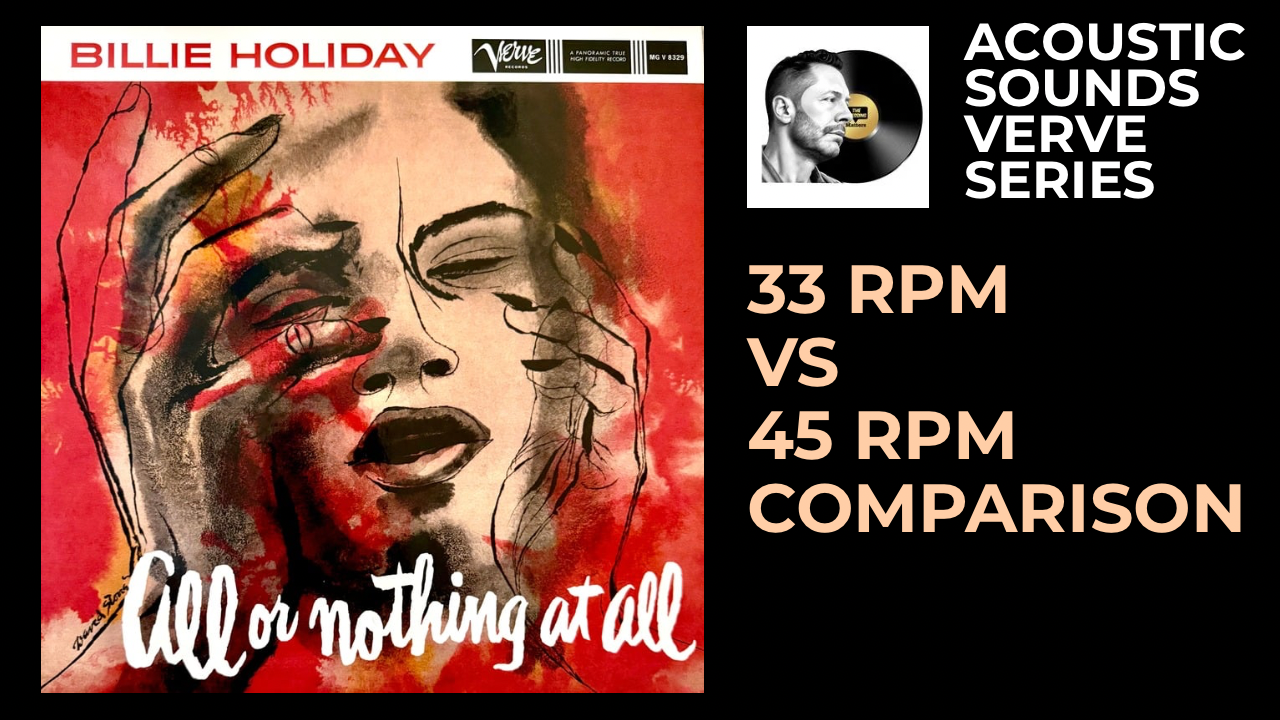Revisiting Billie Holiday's All or Nothing at All: Acoustic Sounds Verve Jazz Series Review
Every once in a while, a reissue comes along that makes you rethink everything you thought you knew about a record. That was my experience with the Acoustic Sounds Verve Jazz Series release of Billie Holiday's All or Nothing at All.
I already owned the 2012 45 RPM version mastered by George Marino. When I first got that pressing early in my collecting journey, it filled an essential spot in my growing Billie Holiday collection. I loved the Verve years, and alongside Body and Soul and Songs for Distingué Lovers, this title was the missing piece. I thought I had my forever copy. The George Marino 45 remains superb—but hearing this new Acoustic Sounds 33 RPM version set some of my assumptions on their head.
The Album and the Artist
All or Nothing at All was recorded in 1956 and 1957 and released in 1958. It's a mono recording featuring an all-star lineup: Harry "Sweets" Edison on trumpet, Ben Webster on saxophone, Barney Kessel on guitar, Jimmy Rowles on piano, Joe Mondragon and Red Mitchell on bass, and Alvin Stoller on drums.
By this point in her career, Billie Holiday's voice had changed from the pure tone of her earlier years. Time, hardship, and personal struggles left their mark. But far from detracting, this gave her voice extraordinary emotional depth and poignancy. This is exactly why so many of us treasure the Verve recordings.
The song list is stellar: "Do Nothing Till You Hear From Me," "Cheek to Cheek," "Ill Wind," "Speak Low," "I Wished on the Moon," "But Not for Me," "All or Nothing at All," "We'll Be Together Again," "Sophisticated Lady," "April in Paris," "Say It Isn't So," and "Love is Here to Stay." Every track is a masterclass in vocal interpretation.
Comparing the Masterings
I was eager to hear how this new cut by Matthew Lutthans at The Mastering Lab would compare to George Marino's 45. Marino's version is cut louder and has a more upfront, immersive quality. It places you squarely in the studio, bringing out tremendous presence, detail, and atmosphere. It's a powerful, hi-fi experience.
But—and this is key—Marino's mastering also adds an edge to Billie's voice that I always wondered about. Was that how it was meant to sound? Or was it an artifact of the mastering?
The new 33 RPM cut by Lutthans takes a different approach. It's mastered a little quieter, but when volume matched, it presents a far more natural sound. Gone is the edge on the vocals and horns. Everything feels more relaxed, more organic. It reminds me of a vintage pressing but with modern audiophile clarity and quiet vinyl.
The visceral reaction was immediate: instead of being pushed into the studio, I felt like I was sitting in the front row of an intimate jazz club. It allowed me to sink into the performance, to relax, to connect with the music emotionally. It wasn't just about the sound—it was about the experience. And that's the magic of this reissue.
Do You Need the 45?
The supposed advantages of the 45 RPM—bigger sound, deeper dynamics—aren't as apparent here. The 33 RPM maintains fidelity across both sides with no end-of-side issues. While some will still love the hi-fi punch of the Marino 45, I found myself preferring the more natural, balanced presentation of the Acoustic Sounds 33.
In fact, if I ever do downsize my 45 collection, this may be one I can let go of in favor of the 33. Matthew Lutthans has done such a stellar job that I consider this the definitive version for my ears and system.
Final Thoughts
This release is a triumph for Acoustic Sounds and for Lutthans' mastering. Chad Kassem's team continues to impress with the Verve Acoustic Sounds Series, and I can't wait to hear what's next.
For anyone on the fence: if you love Billie Holiday and want a version of All or Nothing at All that draws you into the heart of the performance, this is the one to get.
A written version of this review also appears on the Audiophilia website. Please check it out and, if you haven't already, subscribe to the channel to help us reach the next milestone.
Thank you for reading. Until next time, happy listening.


